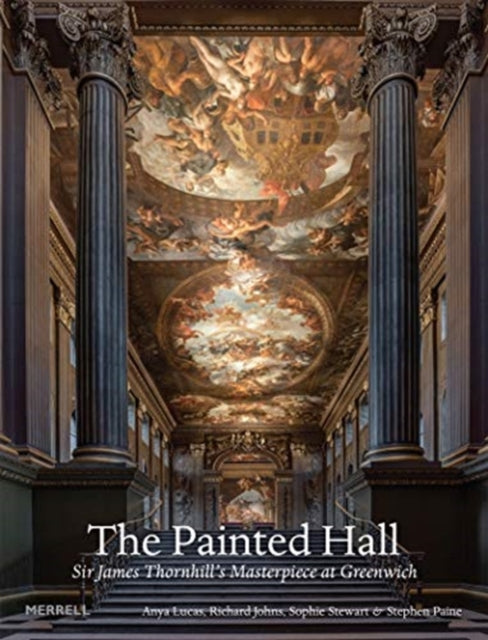Old Royal Naval College Shop
The Painted Hall
The Painted Hall
Couldn't load pickup availability
- Author: Anya Lucas, Richard Johns, Sophie Stewart, Stephen Paine
- Format: Hardback 160 pages, 150 colour
- Publisher: Merrell Publishers
- Published: 14 Nov 2019
Published to mark the reopening of the spectacular baroque interior of the Old Royal Naval College in Greenwich after a landmark conservation project, The Painted Hall is a wonderful celebration of what has been called `Britain's Sistine Chapel'. The ceiling and wall decorations of the Painted Hall were conceived and executed by the artist Sir James Thornhill between 1707 and 1726 - years that witnessed the Act of Union during the reign of Queen Anne and Great Britain's rise to become a dominant Protestant power in a predominantly Catholic Europe. The accessions to the throne of William III and Mary II in 1688 and George I in 1714 form the central narrative of a scheme that also honours Britain's maritime successes and mercantile prosperity.
The artist drew on a cast of around 200 figures - a mixture of historical, contemporary, allegorical and mythological characters - to tell a story of political change, scientific and cultural achievements, naval endeavours, and commercial enterprise against a series of magnificent backdrops. In the first part of the book, Dr Anya Lucas describes the history and architecture of the building and the background to Thornhill's commission. The grandeur of his composition, which covers 40,000 square feet, reflects the importance of the space that the paintings adorn: the hall of the new Royal Hospital for Seamen.
The Hospital was established in 1694 at Queen Mary's instigation for men invalided out of the Navy, and was designed by Sir Christopher Wren and Nicholas Hawksmoor. The Painted Hall was originally intended as a grand dining room, but it soon became a ceremonial space open to paying visitors and reserved for special functions. The last naval pensioners left the site in 1869, when it became home to the Royal Naval College, an officers' training academy.
The passage of nineteen years from the start of the commission to its completion, and the need to navigate contemporary political events, meant that Thornhill was required to rethink the design of his paintings several times. His preparatory sketches for the Painted Hall reveal how carefully he experimented with and planned the content. When he had finished his work, Thornhill wrote An Explanation of the paintings, which was published by the Hospital directors and sold to visitors.
This guide is the subject of the second part of our book, by Dr Richard Johns. Johns also explores image and meaning in Thornhill's decorative scheme, which stretches across three distinct but connected spaces: the domed Vestibule, the long Lower Hall, and the Upper Hall, together presenting a vivid and compelling picture of Britain's place in the world according to those who governed it at the start of the 18th century. During the last 300 years, smoke and dirt built up on the fragile painted surfaces of the Hall, and varnish layers fractured under the effects of heat and humidity.
In the final part of the book, the specialist conservators Sophie Stewart and Stephen Paine consider historic restorations of the Painted Hall from the 18th century to the Ministry of Works campaign of the late 1950s. The spring of 2019 sees the completion of a ground-breaking conservation programme that has reversed decades of decay and ensured the long-term preservation of the paintings. Now that every inch of decorated surface has been lovingly cleaned and conserved, new photography brings the colour, clarity and vibrancy of Thornhill's masterpiece to life.
Share


